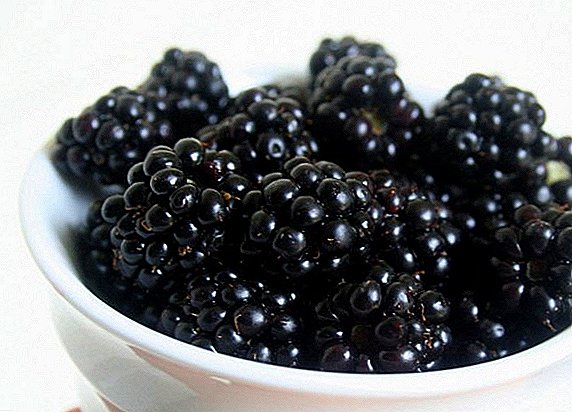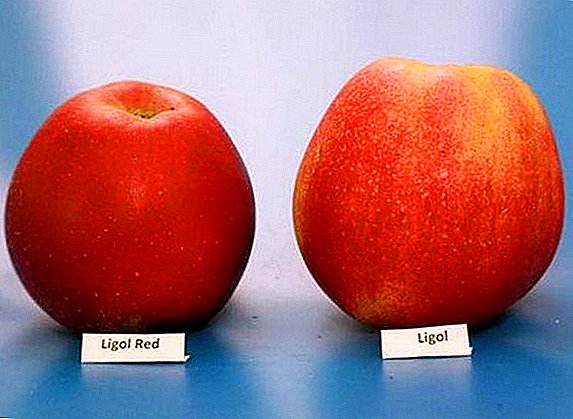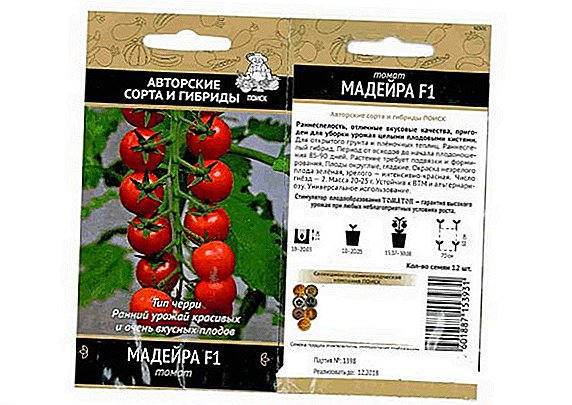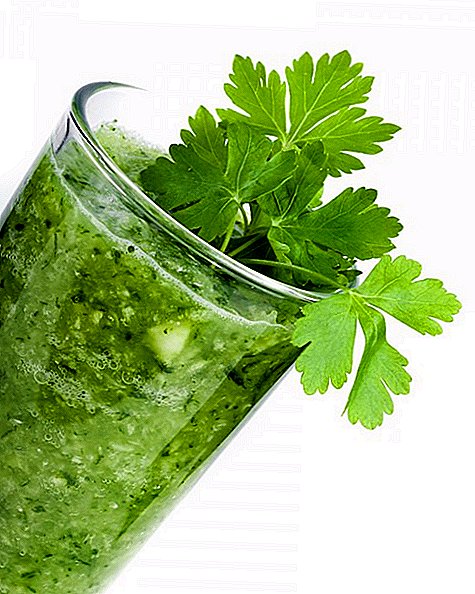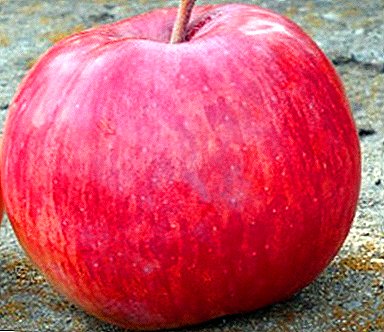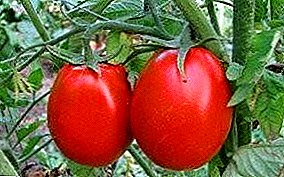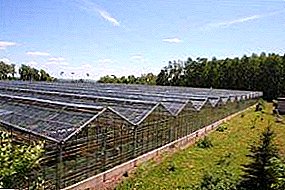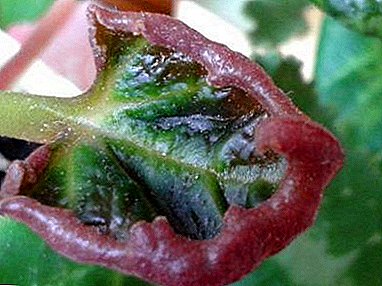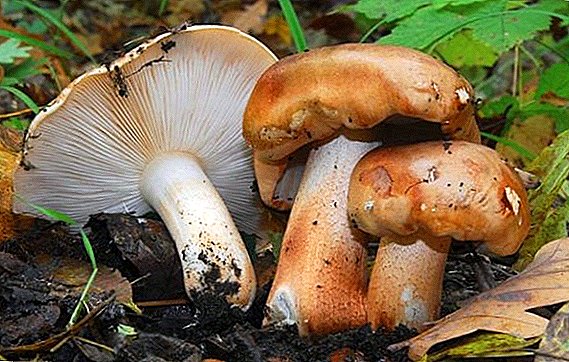 In September-October, the mushroom season is in full swing. Lovers rush into the woods and landing on a quiet hunt. During this period, there are various types of rows. Some mushroom pickers prefer to avoid them, but in vain. A good edible variety of these mushrooms is the poplar row.
In September-October, the mushroom season is in full swing. Lovers rush into the woods and landing on a quiet hunt. During this period, there are various types of rows. Some mushroom pickers prefer to avoid them, but in vain. A good edible variety of these mushrooms is the poplar row.
Botanical description
Poplar rowing is a fungus that grows on the surface of the earth and belongs to the genus ryadovok. It is also called podtopolnik, and its botanical name - Tricholoma populinum. This mushroom can have yellow, gray and red shades of brown hats, under their skin is the mushroom flesh of a reddish hue. In young mushrooms, it is convex, and as it grows, it straightens and, with old age, has a hollow, reaching 18 centimeters.  The edges of her uneven, small waves, may have cracks. The young mushroom has white plates with a pale pink shade, which eventually begin to darken and acquire a red-brown color with patches of red tones. The leg of the fungus is solid flesh, has the shape of a cylinder and is slightly expanded at the bottom. Usually the length of the leg is 3-6 centimeters, but sometimes it can reach 12 centimeters. Normal thickness - 1-4 centimeters.
The edges of her uneven, small waves, may have cracks. The young mushroom has white plates with a pale pink shade, which eventually begin to darken and acquire a red-brown color with patches of red tones. The leg of the fungus is solid flesh, has the shape of a cylinder and is slightly expanded at the bottom. Usually the length of the leg is 3-6 centimeters, but sometimes it can reach 12 centimeters. Normal thickness - 1-4 centimeters.
The pulp of this fungus is fleshy, white in color, slightly sweet in taste, has a slightly floury smell.
Did you know? Mushrooms can sunbathe: if they have enough sun, then they can, like people, produce vitamin D. The color of the cap depends on it.
Calorie content
Poplar rowing, like all varieties of this fungus, has a rather low calorie content - 20.2 kcal per 100 grams.
The nutritional value
100 grams of poplar rowing is:
- proteins - 2.4 g;
- carbohydrates - 1.8 g;
- fat - 0.83 g
 Low calorie and high protein content makes this product attractive for various weight loss diets. And the presence of a complex of vitamins and minerals inherent in mushrooms, will be useful for the normal functioning of the body.
Low calorie and high protein content makes this product attractive for various weight loss diets. And the presence of a complex of vitamins and minerals inherent in mushrooms, will be useful for the normal functioning of the body.These mushrooms contain vitamins of group B, PP, a certain amount of vitamins C, D and K, a lot of potassium, phosphorus, selenium, copper and other minerals.
No less useful are such mushrooms as: white podgruzoviki, pigs, cep, boletus, boletus, chanterelles, boletus mushrooms, boletus and champignons.
When and where grows poplar row
Podtopolnik can be found in the temperate climate of Eurasia and North America, in any locality in which poplars grow. After all, it grows, as is already clear from the name, beneath or close to them. In the period of leaf fall (August-November), it can be met by a large group in plantings, parks, poplar groves.  It is not so easy to detect - it can only slightly raise the turf layer and its brown cap is not so easy to notice. But, if they found at least one podtopolnik, then surely there are still quite a few others nearby.
It is not so easy to detect - it can only slightly raise the turf layer and its brown cap is not so easy to notice. But, if they found at least one podtopolnik, then surely there are still quite a few others nearby.
Types and their features
The genus of fungi, to which the poplar tree belongs, numbers about one hundred species, but in Russia only 45 species grow. Among them are inedible and toxic specimens. The genus ryadovok got its name because these plate mushrooms grow in groups and often form "witch circles."
Did you know? Mushrooms do not belong to either the animal or the plant world. They form a separate kingdom of mushrooms. Their composition in the content of protein compounds similar to animals, and in carbohydrates and minerals - with vegetation.
Consider the edible types of rows most interesting for mushroom pickers:
- gray ryadovka (streaky). A good edible mushroom, which is also called the cherry and sub-funnel for growing in pine and mixed forests in September-November. The color of the cap is gray, often with olive or purple hues. On a hat dark radial fibers are looked through. In wet weather, it is slimy and forest garbage is glued to it a little;

- crowded row. This species is not associated with any particular tree, grows in deciduous and mixed forests and has a dirty white color, as well as gray or gray-brown colors. At a young age like a podtopolnik. It grows in September-November and is so crowded that it is sometimes difficult to divide fruit bodies. Hat 4-10 cm, the flesh is white or grayish tones, with a faint smell of flour;

- greenfinch. It has a greenish hat with a yellow tinge, yellow plates and white, with time yellowing flesh. It grows mainly in pine forests on sandy soils, from September to November frosts;

- may mushroom. Usually it grows in May-June, the color of the cap is first cream, then whitish, and in old mushrooms it is ocher. The flesh is dense, white with a floury smell, cream plates, a hat with a diameter of 4-6 cm. It grows in meadows and glades, pastures, low forest;

- yellow-red (red). It has a hat ranging in size from 5 to 15 cm in orange-red color, covered with small red-brown scales. Conditionally edible type with yellow bitter pulp. It usually grows in pine on inanimate wood, in July-October, and has the smell of rotten wood or sour;

- yellow-brown row. Her hat is red-brown or yellow-brown with lighter edges, ranging in size from 3 to 15 cm. This edible mushroom grows only near birch trees in July and October. It has a white or yellowish flesh with a floury smell and a bitter taste;

- purple. The cap can reach 20 cm, but usually has a size from 6 to 15 cm, a bright purple color, which darkens with time, the plates are also purple tones. The flesh is fleshy light-purple in color, which eventually turns into ocher-cream, with aniseed odor, conditionally edible. It grows in coniferous and mixed forests, on the edges and clearings, likes rotting organics.

Did you know? Some mushrooms contain substances that temporarily affect the human psyche. This property was used by shamans during their rituals.
Useful properties
The composition of the line includes substances that positively affect the work of the human body. It has such useful properties:
- boosts immunity, removes slags and toxins;
- reduces cholesterol, strengthens blood vessels;
- cancer prevention;
- anti-inflammatory, antibacterial and antimicrobial action;
- reduces the amount of sugar in the blood;
- positive effect on the functioning of the central nervous system.
Contains few calories and will fit perfectly into various diets, including for weight loss and cholesterol.
Possible harm
If you violate the technology of preparation of many types of ryadovok can be poisoned, and then there will be headache, nausea, vomiting and diarrhea. Overeat properly cooked fungus also should not be - it is not easily digested and may appear heaviness in the stomach and other unpleasant symptoms.
In order to avoid trouble, it is better to collect young non-wormy specimens of these mushrooms, and to give preference to the edible rather than conditionally edible species. 
Contraindications
Almost all mushrooms are difficult to digest by the body, and their use should be limited in the case of:
- pancreatitis;
- dysfunction of the gallbladder, cholecystitis;
- low acidity;
- other chronic diseases of the digestive tract.
Important! Most pediatricians recommend entering mushrooms into a children's menu from the age of seven and starting with domesticated mushrooms - mushrooms and oyster mushrooms. If there are at least some problems with the work of the digestive system or other health problems, then it is better to postpone the use of mushrooms until the age of 10 years.
How to choose when buying
First of all, it is necessary to buy such a mushroom as a rowwood poplar from proven mushroom pickers, who are well versed in mushrooms, and do not collect them on the roadsides. The leg of the fungus should be cut off enough to be able to determine from it how much the fungus is affected by the worms.
You need to buy fresh, young and not too wormy copies. The old mushroom is flabby, dried up, and the leg does not fit well on the cap.  In young podtopolniki, the caps are convex and the plates with pulp are distinguished by white flesh, and as they age, they turn reddish-brown. Plates in older mushrooms are more open, and in young ones they are more closely adhered to each other. Smell the mushroom - the fresh mushroom of this species has a floury smell, and the old mushrooms smell unpleasant.
In young podtopolniki, the caps are convex and the plates with pulp are distinguished by white flesh, and as they age, they turn reddish-brown. Plates in older mushrooms are more open, and in young ones they are more closely adhered to each other. Smell the mushroom - the fresh mushroom of this species has a floury smell, and the old mushrooms smell unpleasant.
Storage conditions
Fresh mushrooms can not be stored - they are quickly eaten by worms. Such a mushroom as a podtopolnik needs to be immediately soaked in salted water upon coming home - salt will help get rid of worms and better purify the mushrooms from the ground and debris.
It is necessary to freeze, preserve, salt or cook these mushrooms only after pre-soaking and boiling.
Learn how to dry oyster mushrooms, pickle chanterelles, and freeze mushrooms such as: champignons, wild mushrooms, chanterelles, oyster mushrooms, and white mushrooms.
How to clean poplar ryadovku
To properly and quickly clean the poplar line, you need to follow the following recommendations:
- after collection, recycle mushrooms for later use should be immediately in order to avoid food poisoning;
- it is better to process dry grading, it should not be washed. Some mushroom pickers manage to clean some of the mushrooms right during the harvest;
- for cleaning mushrooms, it is desirable to take a small size knife. With its help it is easier to clean the feet and caps of dirt and other debris. For this purpose, you also need a hard sponge and brush;
- then the mushrooms are transferred to salted water. This procedure will help not only to get rid of worms, but also to prevent the rows themselves from turning black.

Important! It is recommended to clean the film from the heads of the rows - then they taste less bitter and you can do without soaking. But if the mushrooms are very dirty, you still need to soak them in water with salt.
Cooking features
Rowing the poplar before cooking should be processed as follows:
- wash thoroughly from dirt, dust;
- then move to a large container, fill with cool water and soak for two or three days. This procedure must be carried out to get rid of bitterness;
- when soaking, water must be periodically changed - at least twice a day;
- when the caps of the mushrooms become elastic and will not break when pressed with your fingers, then you can proceed to further processing.
This mushroom can be fried, stewed with sour cream, salted, pickled and canned for eating. From the poplar rowing there are many recipes for cooking the first and second courses. Consider the most popular ones.
Recipe - Marinated Poplar Rows
Excellent taste is obtained from pickled ryadovki.
Ingredients
The following ingredients are taken for pickling for one liter of marinade:
- poplar rowing;
- ordinary salt - 2 tablespoons;
- granulated sugar - 2 tablespoons;
- Acetic essence - 3 teaspoons;
- bay leaf, dill to taste;
- black pepper peas - 10 pieces;
- fragrant carnation - 6 pieces;
- water for marinade - 1 liter.
Cooking method
Soaked and well-washed mushrooms are thrown into a saucepan with water, salted and boiled for about 15 minutes. Then the water is poured and poured new, boil another 45-50 minutes. At the expiration of time, move the mushrooms to a colander. At the same time prepare the marinade. Marinade make on the basis of proportions per 10-liter bucket of mushrooms 1.5 liters. To do this, pour water, throw salt, sugar, seasonings and cook for 15 minutes, at the end add vinegar essence.
At the same time, cans and nylon caps pre-washed with soda are sterilized. Place the boiled mushrooms on the banks with the caps down and pour the marinade until it is filled to the brim. After the top put on the lid, cool and place in the refrigerator. After a month such pickled mushrooms are ready.
Recipe - salting poplar row
The pickling of mushrooms can be carried out in both cold and hot ways.
Ingredients
For hot pickling, you need to take the following ingredients:
- Poplar row - 1 kg:
- salt - 50 g;
- medium bulb - 1 pc .;
- garlic - 4 large cloves;
- dried dill, a bunch of tarragon, horseradish root - to taste.
Cooking method
For this purpose, whole, not overgrown mushrooms are selected. Rowing, previously thoroughly washed, boiled in salted water for at least half an hour. Then move to a colander and rinse in cool water. Well-washed glass jars are sterilized.
Boiled mushrooms are placed in a jar, dropped in salt and all spices. Mushrooms in banks are laid out as closely as possible. Instead of cans, you can take the barrel, and put the oppression on top. You can try in a week.
With the cold method of salting, mushrooms are soaked for at least three days. The ingredients are the same as with the hot method, but you need to take more salt - 5% of the total weight of the row. After soaking, the rows are thoroughly washed, thrown back onto the sieve and wait for the water to drain.
Banks are sterilized, and the bottom is sprinkled with salt. If mushrooms are salted in a tub, then it is doused with boiling water and the bottom is also sprinkled with salt.
Did you know? During the growth period, the internal pressure of the fungus can reach seven atmospheres, so it can even break through through iron or marble.
On the salt, the mushrooms in the jars or tub are put the mushrooms in two layers to the top and covered with salt. And so - until the end of the tank. Then, instead of covers, take wooden circles and cover from above.
Under these circles place sterile gauze folded several times. Put a load on top. As soon as the mushrooms settle, add another rowing.
After 7 days, a brine is formed on the surface. If such a brine does not appear, then the pressure from above must be increased by a large weight, the container should be covered with polyethylene, and the dishes should be exposed to cold. Rowing will be ready in about 40 days.
Recipe - Fried Poplar
Very tasty it turns out poplar rowing in fried.
Ingredients
To prepare such a dish, the following ingredients are taken:
- fresh young podtopolniki;
- flour;
- salt;
- vegetable oil;
- greens - dill or parsley.
Important! If the mushrooms are not the youngest, then they must be soaked beforehand, otherwise they will taste bitter. For reliability, they should be boiled, and not scalded.
Cooking method
Rinse thoroughly with a brush, clean, scald with boiling water and dry with a towel. Cut the mushrooms into larger strips. Then they are placed on a well warmed pan with sunflower oil, salted. After the liquid, which stands out from the row, evaporate, add a little flour and fry further until cooked. At the end of frying, you can add sour cream, sprinkle with herbs. Spices are added to taste. 
Growing up
For podtopolnikom not necessarily walk in the woods and plantings, it can be grown on the site or indoors.
Preparation and laying of the substrate with mycelium
For the cultivation of poplar ryadovki need to first prepare a substrate with mycelium. Mycelium is better to buy in a specialty store. Peat has proven itself as a substrate.
You can take the prepared soil or just the ground. In five kilograms of soil you need to add one hundred grams of chalk and one liter of water. Then another fifty grams of mycelium is added, and then mixed in until a homogeneous mass.
Important! Since the podtopolnik forms mycorrhiza (symbiosis) with poplars, a turf layer from under the poplar and rotted poplar twigs should be added to the substrate.
Soil and fertilizer
Growing poplar ryadovki can be carried out in outdoor conditions and indoors. It is much easier to grow mushrooms in outdoor conditions. The month of May is perfect for this purpose.  The prepared substrate with mycelium is laid out on the prepared beds in boxes or bags, and sprinkled on top of wet soil (layer - five centimeters). Then covered with foil, maintain high humidity and monitor the ventilation of air at the edges.
The prepared substrate with mycelium is laid out on the prepared beds in boxes or bags, and sprinkled on top of wet soil (layer - five centimeters). Then covered with foil, maintain high humidity and monitor the ventilation of air at the edges.
When planting, you can use as a compost fresh dry straw (12 kilograms), to which add bird droppings (8 kilograms). Instead of bird droppings, you can take horse or cow dung. Compost preparation time: 22-26 days.
Get acquainted with the features of composting with your own hands or in bags for garbage.
Mycelium grows rapidly at a temperature of +20 degrees. After it grows well, the film is removed and the substrate is placed in a shady place with high humidity. After collecting the grown-up poplar rowing, you need to make a good watering and pour about 3-5 cm of land.
Temperature conditions
An important factor in the cultivation of these mushrooms is a special temperature. So, the first harvest of these mushrooms is obtained only if the air temperature drops to 15 degrees or slightly below.
If poplar ryadovku grown in the room, you must adhere to this mode:
- optimum temperature in the range of 12-15 degrees;
- high humidity.
Ventilation and lighting
In the room for the growth of fungi should be good natural lighting, as well as the need to provide constant ventilation and ventilation. 
Wintering
Before the onset of frosts, the mycelium is filled with a layer of straw, mowed with grass and leaves. In the spring, when a constant temperature is reached not lower than +10 degrees, the mushrooms open.
By the way, the easiest way to grow a podtopolnik on the site will be to scatter pieces of mushroom caps near the growing poplar (if there is one) or transfer of a carefully dug out mycelium together with a part of the ground.
In the autumn season, the mushroom pickers should take a closer look at the ground near the poplars, and suddenly there will be a sub-stand among the leaves and turf. Then his relatives will be guaranteed around, and from the whole family of these mushrooms you can cook a lot of tasty things.


